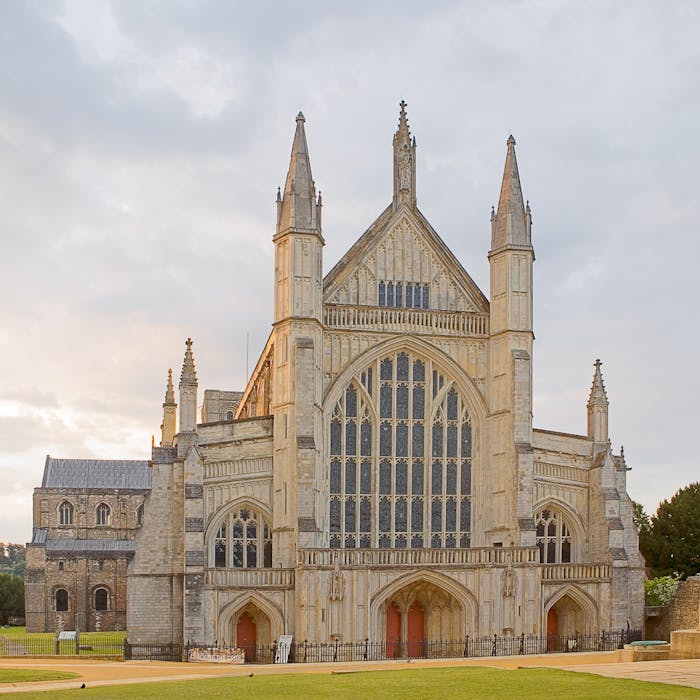
Winchester Cathedral - a magnificent medieval creation
Winchester Cathedral in Hampshire is the longest cathedral building in Britain, stretching 169m from the west entrance to the east end, and is one of the biggest medieval churches in the world.
It was founded in 1079 on a site immediately south of the earlier Anglo Saxon cathedral, founded in 642AD, known as Old Minster. This was demolished in 1093, immediately after the consecration of its successor.
In 1079, Walkelin, first Bishop of Winchester and a blood relation of William the Conqueror, began work on the completely new cathedral. For construction materials, King William I granted him as much timber as he could take in four days from the Forest of Hempage Wood in Hampshire. William II then granted him half a hide (60 acres) in the Isle of Wight, to excavate stone. The new cathedral was completed in 1093.
In the same year, on St Swithun's Day, the monks of Old Minster were moved to the new cathedral, and the feretrum containing the remains of St Swithun himself was also moved to the new building, having been held at Old Minster.
Extravagant works of art were commissioned, such as a new font celebrating the work of St Nicholas. In the 12th century, a magnificent illuminated Bible was made for the monks to use in their daily worship, which can still be seen in the Cathedral Library.
In the centuries that followed, wealthy bishops added to the opulence of the Norman cathedral. They remodelled it with soaring gothic arches in the 14th century, and made it more ornate in the 15th and 16th. The dissolution of England’s monasteries during the 1530s under Henry VIII led to Protestantism being practiced in the cathedral.
The 19th century saw much restoration work, including new stone statues for the huge 15th-century Great Screen behind the altar. The Cathedral’s Organ, a cut-down version of a huge organ displayed at the 1851 Great Exhibition in London, was installed.
By the early 1900s, there were fears that the east end of this ancient building would collapse, after centuries of subsidence. The Cathedral was built on a flood plain, and its crypt is full of water. Deep-sea diver, William Walker, worked there in total darkness for six years to stabilise the foundations. A statue commemorating Walker in his diving suit is at the far end of the building.
Another statue, a life-sized naked man, modelled by Antony Gormley on himself, stands up to his shins, gazing at his cupped hands.
Today, after 12 centuries, this great Cathedral remains the seat of the Bishop of Winchester and centre of the Diocese of Winchester. It is a much-loved and visited beautiful space, especially when echoing to the sound of daily prayers and glorious sacred music.
Further reading
Links to external websites are not maintained by Bite Sized Britain. They are provided to give users access to additional information. Bite Sized Britain is not responsible for the content of these external websites.
